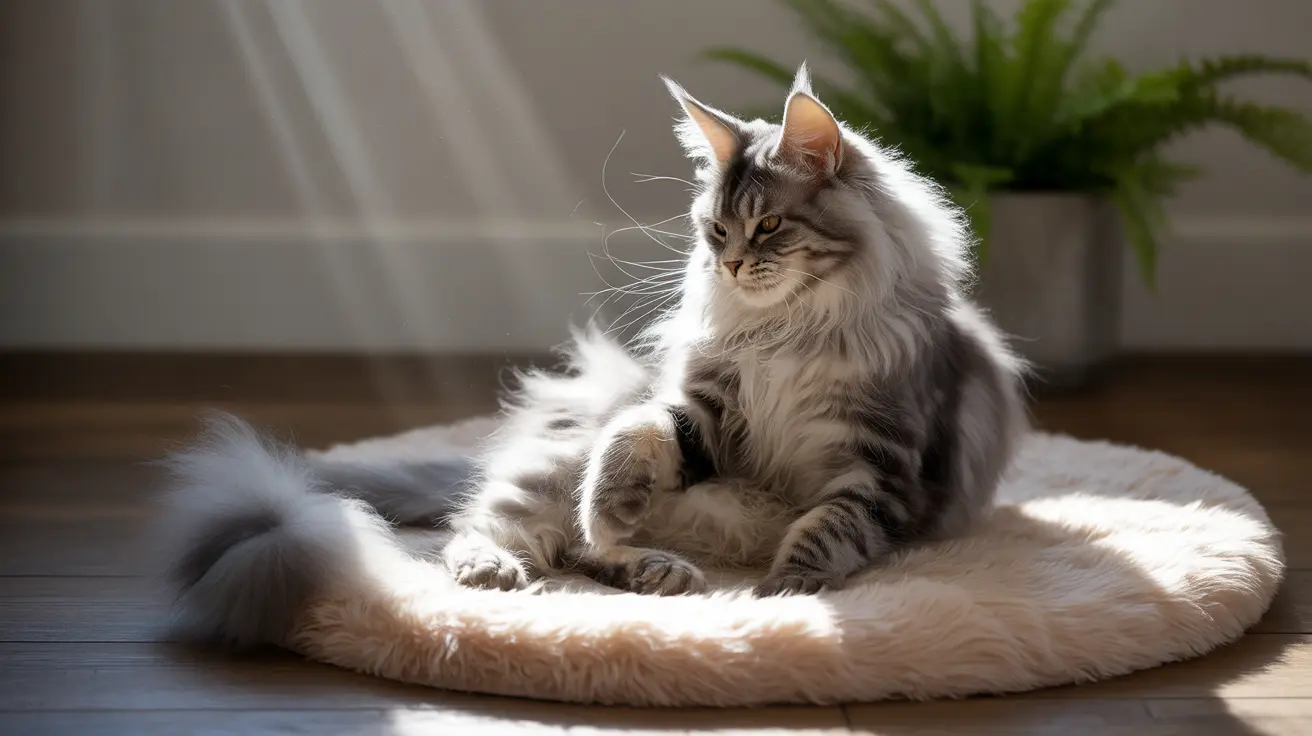Understanding Lykoi Cats and Allergens
Lykoi cats produce the same allergenic proteins (primarily Fel d 1) found in all cats, regardless of their unique coat pattern. This protein is present in their saliva, skin oils, and dander - not just their fur. In fact, their distinctive molting pattern might actually increase allergen distribution in your home.
Their lack of an undercoat and partial hairlessness doesn't reduce allergen production. Instead, their special coat characteristics create unique grooming challenges that can impact allergy sufferers.
The Lykoi's Unique Coat Characteristics
The breed's signature "roan" coat pattern consists of a mix of pigmented and white hairs, creating their werewolf-like appearance. This sparse coat undergoes dramatic seasonal changes, with some cats experiencing complete molting multiple times per year.
Most Lykoi cats will "wolf out" periodically, losing nearly all their fur before it regrows. This natural process can lead to increased dander distribution throughout your home, potentially triggering more allergic reactions.
Special Grooming and Care Requirements
Lykoi cats need specific grooming routines to maintain healthy skin and manage allergen levels:
- Regular brushing (1-3 times weekly) to remove loose fur and dander
- Frequent bathing (monthly to weekly, depending on skin condition)
- Special attention to skin care due to oil buildup and potential blackheads
- Protection from sun exposure due to sparse coat coverage
Managing Allergies Around Lykoi Cats
If you're considering a Lykoi despite having allergies, consider these management strategies:
- Install HEPA air purifiers in main living areas
- Maintain a strict cleaning schedule for floors and furniture
- Create "cat-free" zones, especially in bedrooms
- Consider allergy immunotherapy treatment
- Spend time with a Lykoi before committing to adoption
Frequently Asked Questions
Are Lykoi cats hypoallergenic or better for people with cat allergies?
No, Lykoi cats are not hypoallergenic. They produce the same allergens as other cats and their unique molting pattern may actually increase allergen exposure in your home.
How often should I groom and bathe my Lykoi cat to manage shedding and skin oils?
Brush your Lykoi 1-3 times weekly and bathe them monthly to weekly, depending on their skin condition. Regular grooming helps manage oil buildup and loose fur.
What special skin care does a Lykoi cat need due to its sparse and patchy coat?
Lykoi cats need protection from sun exposure, regular monitoring for blackheads or skin issues, and careful bathing to manage oil production without over-drying their sensitive skin.
Why do Lykoi cats molt their entire coat, and how does this affect allergy considerations?
Lykoi cats undergo periodic complete molting as part of their natural coat cycle. This process can increase allergen distribution in your home as loose fur and dander spread more widely.
How can I protect my Lykoi cat's skin from sunburn and temperature extremes?
Keep your Lykoi primarily indoors, provide shade in outdoor spaces, and consider pet-safe sunscreen for limited sun exposure. Maintain comfortable indoor temperatures to prevent skin issues.
Conclusion
While Lykoi cats are fascinating and loving companions, their unique coat characteristics don't make them hypoallergenic. Potential owners with allergies should carefully consider their sensitivity levels and ability to maintain the breed's special grooming requirements before bringing a Lykoi into their home.
Remember that individual reactions to cat allergens vary widely, so spending time with a Lykoi before adoption remains the best way to assess your compatibility with this unique breed.






